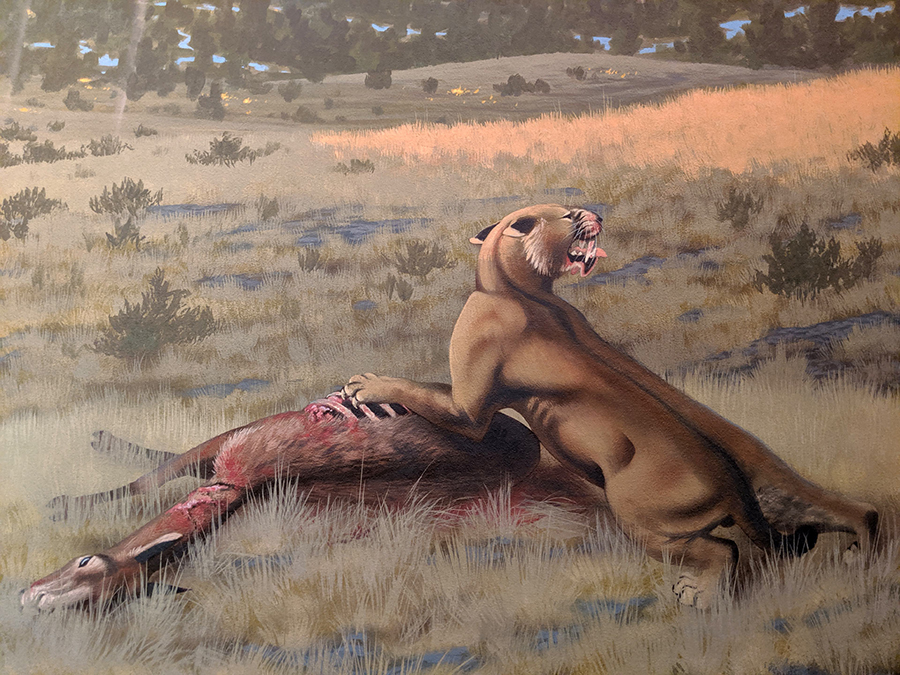Machairodus lahayishupup: Giant Saber-Toothed Cat Roamed North America during Miocene

Paleontologists from the Ohio State University at Marion and Gonzaga University have identified a new species of large machairodontine saber-toothed cat from the fossilized remains found in North America.
The newly-identified cat lived in what is now North America between 5.5 and 9 million years ago (Miocene Epoch).
It belongs to Machairodus, a genus of large saber-toothed cat that lived in Africa, Eurasia and North America, and is an ancient relative of the best-known saber-toothed cat Smilodon.
Named Machairodus lahayishupup, the new species had a mass up to 410 kg, making it one of the largest felids in Earth’s history.
“We believe these were animals that were routinely taking down bison-sized animals. This was by far the largest cat alive at that time,” said Dr. Jonathan Calede, a researcher in the Department of Evolution, Ecology, and Organismal Biology at the Ohio State University at Marion.
Dr. Calede and his colleague, Dr. John Orcutt from the Department of Biology at Gonzaga University, examined several humeri (upper arm bones) of Machairodus lahayishupup from museums in Oregon, Idaho, California and Texas.
“One of the big stories of all of this is that we ended up uncovering specimen after specimen of this giant cat in museums in western North America,” Dr. Orcutt said.
“They were clearly big cats. We started with a few assumptions based on their age, in the 5.5 to 9 million-year-old range, and based on their size, because these things were huge.”
“What we didn’t have then, that we have now, is the test of whether the size and anatomy of those bones tells us anything — and it turns out that yes, they do.”
“A discovery that this giant cat in North America existed at the same time similar animals lived around the world also raises another evolutionary question,” Dr. Calede said.
“It’s been known that there were giant cats in Europe, Asia and Africa, and now we have our own giant saber-toothed cat in North America during this period as well.”
“There’s a very interesting pattern of either repeated independent evolution on every continent of this giant body size in what remains a pretty hyperspecialized way of hunting, or we have this ancestral giant saber-toothed cat that dispersed to all of those continents. It’s an interesting paleontological question.”
The discovery is reported in a paper published in the Journal of Mammalian Evolution.
_____
J.D. Orcutt & J.J. Calede. Quantitative Analyses of Feliform Humeri Reveal the Existence of a Very Large Cat in North America During the Miocene. J Mammal Evol, published online May 3, 2021; doi: 10.1007/s10914-021-09540-1
Source: www.sci-news.com/








